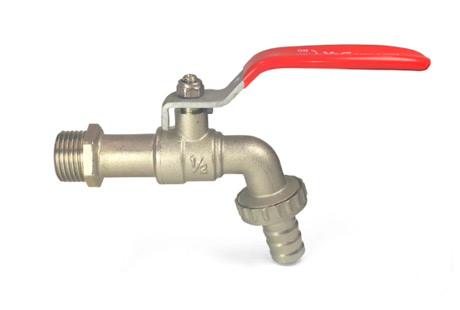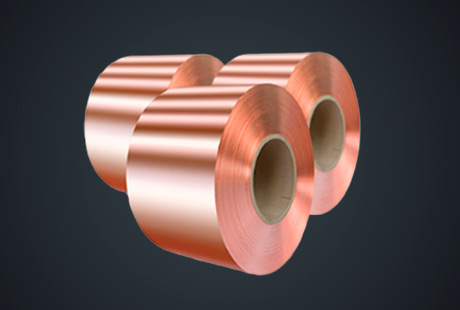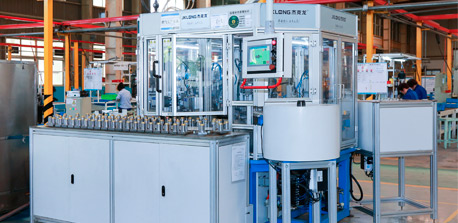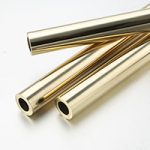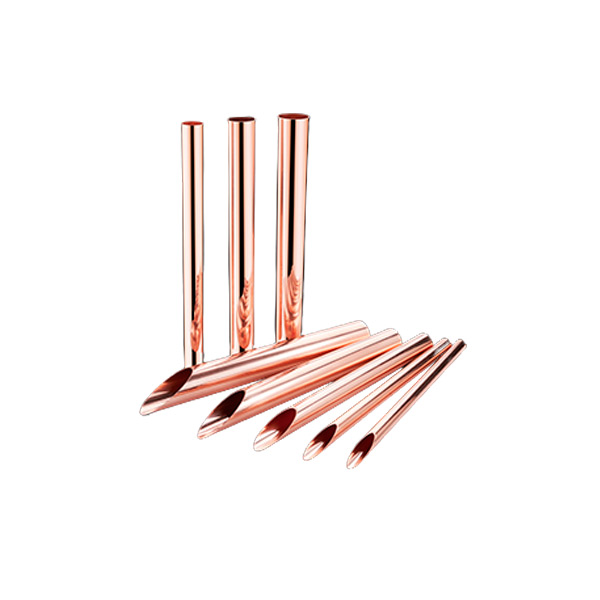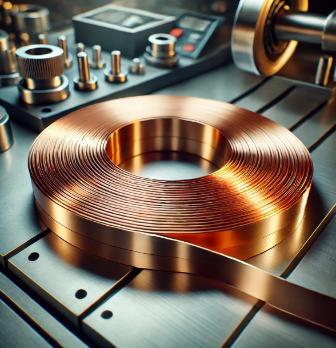Characteristic of Copper Tube
Light weight, good thermal conductivity, high temperature strength. Commonly used in the manufacture of heat exchange equipment (such as condensers, etc.). It is also used for assembling cryogenic pipelines in oxygen production equipment. Copper tubes with small diameters are often used to transport pressured liquids (such as lubrication systems, hydraulic systems, etc.) and pressure measuring tubes used as instruments.
Copper pipes have the characteristics of sturdiness and corrosion resistance, and have become the first choice for modern contractors to install tap water pipes, heating and cooling pipes in all residential commercial houses.
The copper tube has many advantages in one: it is strong and has the high strength of general metals; at the same time, it is more flexible, twisting, cracking, and breaking than normal metals, and has certain resistance to frost heave and impact resistance, so the building Once the copper water pipe in the water supply system are installed, they are safe and reliable to use, even without maintenance.

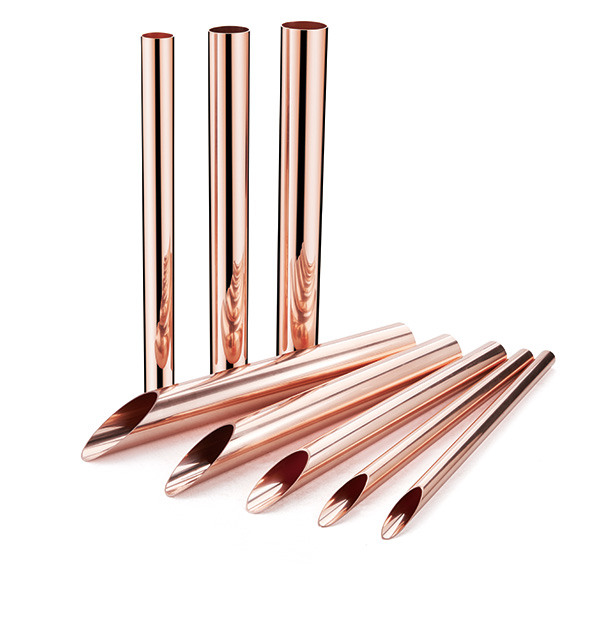
Advantage of Copper Pipe
The copper pipe has a hard texture, is not easy to corrode, and is resistant to high temperature and high pressure, and can be used in various environments. Compared with this, the shortcomings of many other pipe materials are obvious. For example, the galvanized steel pipes used in residential houses in the past are very susceptible to corrosion, and the problems such as yellowing of tap water and small water flow will occur after a short time. There are also some materials whose strength under high temperature will decrease rapidly, which will cause hidden dangers when used in hot water pipes. The melting point of copper is as high as 1083 degrees Celsius, and the temperature of the hot water system is negligible for copper pipes. Archaeologists discovered a copper water pipe 4500 years ago in the Egyptian pyramids, which can still be used today.
Copper tube is durable
The chemical properties of copper are stable, and the characteristics of cold resistance, heat resistance, pressure resistance, corrosion resistance and fire resistance (the melting point of copper is as high as 1083 degrees Celsius) are integrated into one, and it can be used for a long time in different environments. The service life of copper pipes can be as long as the service life of buildings, or even longer. For example, the copper plumbing fittings installed in the 1920s of Peking Union Medical College Hospital in the 1920s still have good performances. It can be seen that the copper pipe is a pipe that has been fully tested after more than one hundred years and practical experience.
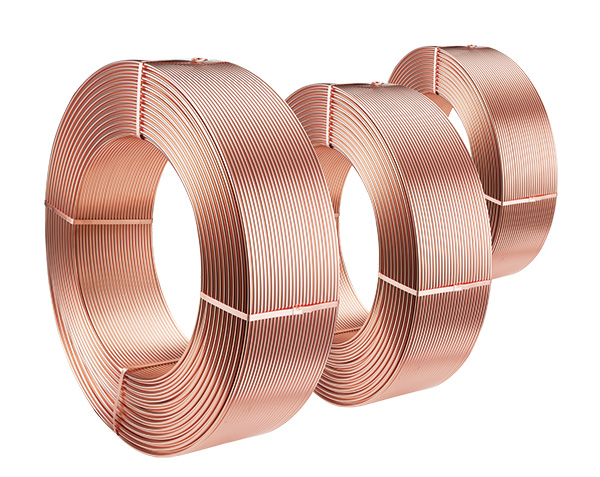

Copper tube is safe and reliable
Copper pipes combine the advantages of metal pipes and non-metal pipes. It is harder than plastic pipes and has a high strength of general metals (the strength of cold-drawn copper pipes is equivalent to steel pipes of the same wall thickness); it is more flexible than ordinary metals, has good toughness and high ductility, and has excellent vibration resistance and resistance. Impact and frost heave resistance.
Copper tubes can withstand extremely cold and extremely hot temperatures, with a wide range of applications from -196 degrees to 250 degrees, and adapt to drastic temperature changes (—high temperature—low temperature—high temperature—), and the performance will not change due to long-term use and temperature And the reduction will not cause aging. This is beyond the reach of ordinary pipes.
The linear expansion coefficient of the copper pipe is very small, which is 1/10 of the plastic pipe, and it can resist fatigue. When the temperature changes, it will not cause excessive thermal expansion and contraction and cause stress fatigue cracking.
These characteristics make the application of copper pipes in cold areas extremely advantageous. The temperature difference between morning and night in severe cold areas is large, the linear expansion coefficient of ordinary pipes is large and the strength is low, and it is easy to produce stress fatigue cracks caused by thermal expansion and contraction. Some claim that -20 degrees are not brittle, but in fact can not withstand working pressure, and the service life is very short, and not practical, although heat preservation measures can be adopted, it is inevitable to encounter low temperatures during transportation, storage and installation, and copper The performance of the tube is the same at -183 degrees and normal temperature.
Copper pipe health
Copper pipes do not have chemical modifiers such as various modifiers, additives, and additives for plastic pipes.
Biological studies have shown that E. coli in the water supply can no longer reproduce in copper pipes; more than 99% of the bacteria in the water are completely killed after entering the copper pipes for 5 hours.
The copper tube structure is extremely dense and impermeable. No matter whether harmful substances such as grease, bacteria, viruses, oxygen and ultraviolet rays can pass through it and pollute the water quality.
In addition, the copper tube does not contain chemically added components, and will not burn and release toxic gases that will suffocate people. The recycling of copper is conducive to environmental protection and is a sustainable green building material.
Strong copper tube connection
There are many kinds of pipes on the market, but most of the fittings are made of copper. Even if some pipes do not need to use copper fittings, it still needs a copper fitting at the place where it is connected to the faucet. However, if the copper pipe fittings are connected with other pipes, due to the different materials of the pipes and fittings, the physical and mechanical properties during thermal expansion and contraction are very different, and the firmness of the connection will naturally be subject to additional challenges. Therefore, when the copper pipe is connected with the copper fittings, the firmness will be greatly enhanced.
Wholesome
Copper water pipes are good for health, and they save water, prevent pollution and sterilize. When choosing or renovating a house, few people ask about the house’s water supply pipeline. In fact, the material of the water supply pipe will greatly affect people’s health.
In the past, domestic galvanized steel pipes were commonly used for water supply in our homes. Not only were they helpless to E. coli and pneumonia bacteria that are prone to breed in water, but also because they were susceptible to corrosion by the atmosphere, soil and water, they also caused secondary pollution to residents’ water. The copper water pipe has strong sterilization and disinfection capabilities. A biological survey showed that E. coli in the water supply no longer continued to multiply in the copper pipe; more than 99% of the bacteria in the water entered the copper pipe and disappeared after 5 hours. This biological performance is that trace copper ions in copper pipes are dissolved in water, and copper ions have strong sterilization ability. For example, putting a small amount of copper in water can destroy mollusks such as snails, snails, and snails that breed in water.
Also. As trace copper ions are separated from the copper tube, water containing copper ions can supplement the human body’s demand for copper elements. Copper is one of the indispensable metal elements for human health. The latest research also shows that if the copper content in the nutritional structure of a meal is less than 1 mg / day, it is not suitable for adults. People already know that vegetables, fruits, food, seafood, etc. can supplement the body’s copper, but experts remind that drinking water is also a way to ingest copper, because drinking water is almost a daily necessary behavior. But in most areas, the copper content in drinking water is not enough to provide the daily copper intake required by the human body, and the use of copper pipes can at least minimize this deficiency. For a long time, people have invented some copper-containing medicines to supplement the human body copper element. But instead of taking medicine, it is better to pay close attention to the effects at your fingertips. Healthy life also needs to be grasped from the source. Copper pipes will silently “build” your strong physique.

 English
English 한국어
한국어 français
français Deutsch
Deutsch Español
Español italiano
italiano العربية
العربية tiếng việt
tiếng việt Türkçe
Türkçe ไทย
ไทย 中文
中文




